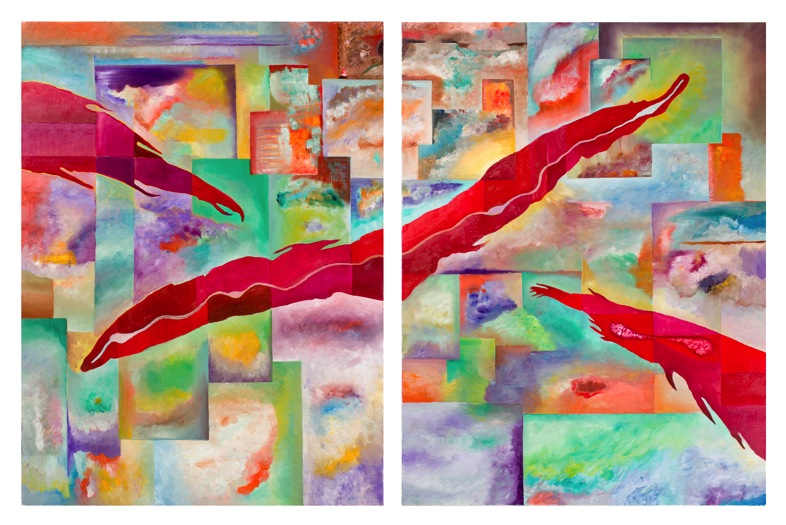How Painting Informs My Writing
People often ask whether my painting informs my writing. As a writer, I used to think I could describe things well. Then I took up painting, and everything changed, because I learned that looking at something was very different from seeing it.
How well or badly one might paint is not the point. The point is that in attempting to capture an object with pencil or paint, one has to do more than look–one has to see.
Imagine looking up at the sky through network of branches, twigs and leaves. The light bounces off the trunk of the tree, shines through single leaves, casts shadows. There is a small fluffy cloud in the sky, so looking at one angle reveals a whitish-grey, leaf-sized patch of sky, while turning the eye a degree or two reveals a patch of pure blue. The number of shades of green are beyond counting; the shapes of leaves and leaf clusters seem impossible to reproduce. Branches are revealed and then hidden by leaves, and the trunk gradually decreases in girth as the trunk stretches skyward.
It’s impossible to reproduce an image like that because you get lost in the details. And because of the difference in scale between the real tree and the canvas you’re painting on, the details would have to be tiny, and would be barely visible.
So in learning to paint, one has to first learn to see, because what one ultimately reproduces on the canvas is not the details but the essence of the scene.
So how is this relevant to writing? Well, if looking and seeing are very different activities, then describing is different again. Capturing the essence of a thing or a person in words requires that one first see that essence. It’s not necessary to learn to paint in order to see. But if you want your readers to be drawn into your scene and stand right there as dinner is being cooked, as an apple is being cut, it helps to be able to see the scene you’re describing.

